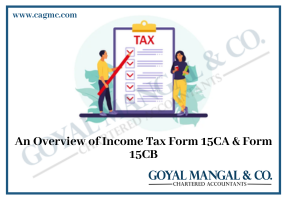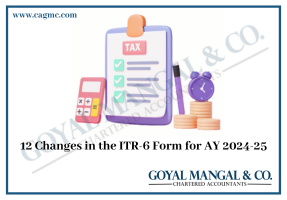| Table of Content |
Meaning of Investment property
According to Ind AS-40 investment property means a property which is held for specifically following two purposes:
- Rental income
- Capital appreciation

Properties covered under Ind AS-40
Ind AS-40 covers two types of properties:
- Property which is held by the owner for the purpose of earning rental income from such property
- Property which is held by the owner for the purpose of earning appreciation profit on such property
Recognition of Property
Initial recognition
As per Ind AS 40 an investment property will be initially recognized at cost incurred in the books of owner
Cost for the purpose of initial recognition on the investment property will be addition of following:
- Purchase cost
- Stamp duty
- Any cost incurred for get investment property ready to use
Exception of cost of investment property
- Advertisement cost
- Start-up expenses (like organization ceremony)
- Ordinary loss ( expenses incurred for the period of not earning profit from the property)
Subsequent recognition
Subsequent recognition means the expenditure incurred on the investment property after initial recognition.
Expenses incurred after completion of initial recognition can be of two types:
- Capital expenditure
- Ordinary expenditure
Capital expenditure: Capital expenditure means expenditure incurred which helps in increasing the benefits of investment property or essential for earning income from investment property. Capital expenditure is capitalized to the cost of investment property.
Ordinary expenditure: Ordinary expenditure means the day to day maintaining expenses incurred in investment property. Ordinary expenditure is charged to Profit or loss statement.
Transfer of property
From Business use to investment property
If owner has an investment property from which it was earning rental income wants to transfer the property for the use in business factory than following two provisions should be taken in mind
- The property will be transferred at its carrying amount (i.e. original cost less accumulated depreciation)
- After transfer the accounting of the property will be done according to the new Ind AS applicable
For Example: If any property is used in the business purpose than its accounting will be done according to the provision of Ind AS-16 is transfer for the purpose of earning rental income that means transfer as investment property then Ind AS-40 will be applicable from the date of transfer of the asset and transfer should be at its carrying amount.
Measurement of Investment property
As per the provision of Ind AS-40, disclosure of Investment property in B/S should be made on the basis of “cost model” the following statement should be prepared for presentation:
| Particulars | Amount |
| Original cost | XXXX |
| (-)Accumulated depreciation | (XXXX) |
| (-)Impairment loss | (XXXX) |
| = Net earnings amount | XXXX |
- If fair value of investment property becomes less than the carrying amount than owner should record the difference as impairment loss and write off in profit or loss statement.
- If fair value of investment property becomes more of carrying amount than investment property will record on its carrying amount in the balance sheet and fair value should be disclosed in the books of accounts.
Disclosure
As per the provision of Ind As-40 the following disclosure are required to be made in notes to accounts of investment property:
- The accounting policy used for the measurement
- Balance sheet- cost model
- Notes to account- fair value method
- Rental income for the year
- Operating expenses
- Depreciation method
- Useful file of the asset
- Fair value measurement if not done by registered valuer than reason of should state
- Reconciliation statement
| Opening carrying amount | Additions | Replacement | Disposal | Closing balance |
| XXXX | XXXX | XXXX | XXXX | XXXX |







